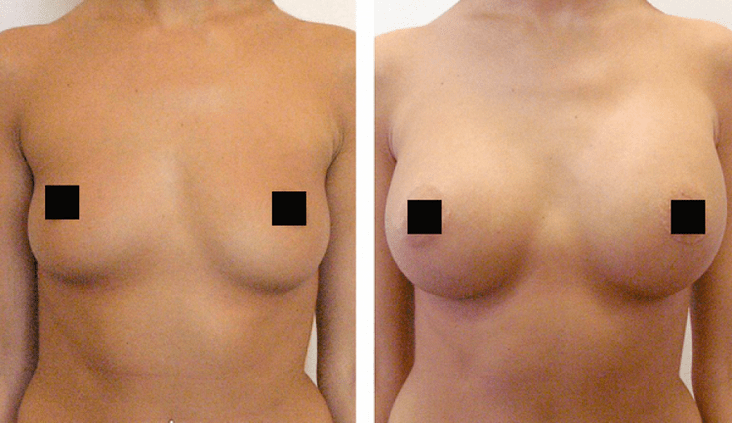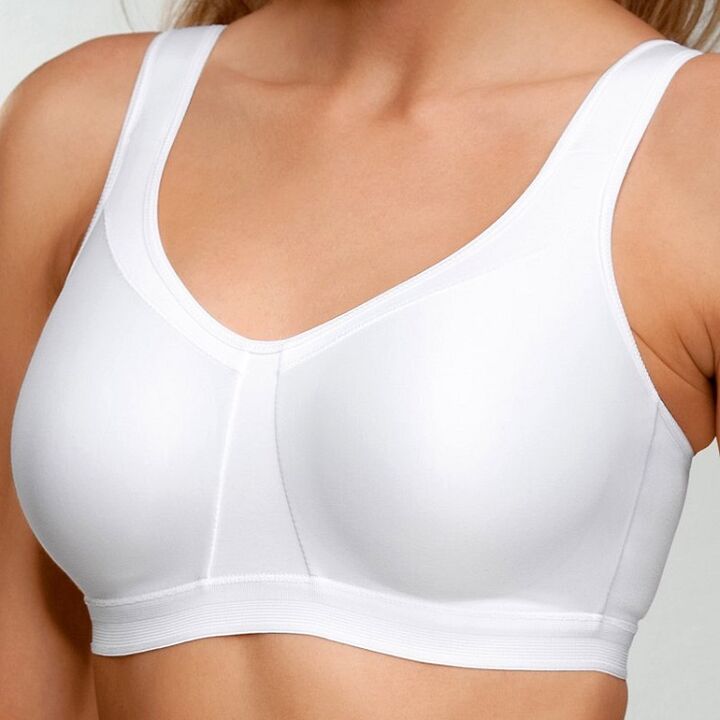Breast augmentation with hyaluronic acid is considered the safest method today. Before the advent of this method, mammoplasty was applied.
Chest surgery was performed, including implants. The chest was enlarged to some extent, but it looked unnatural.
At the same time, no one could guarantee that the operation would go smoothly. The emergence of this method of breast augmentation puts women at less risk.

How to increase breasts with hyaluronic acid?
Many have heard of hyaluronic acid. One knows it as the main component of synovial fluid, which lubricates the articular cartilage in the connective tissues, and someone has heard of it from the world of cosmetology.
It is known to maintain the firmness and elasticity of the skin in particular. How does this happen?
Hyaluronic acid, like a sponge, has the ability to absorb and retain water, providing volume and hydration to tissues.
Due to this feature, this polysaccharide has been successfully used in plastic surgery for breast augmentation.
This technique allows you to get the desired breast size without resorting to surgery.
Breast augmentation is performed with dermal fillers based on hyaluronic acid, gel injections.
Because the molecules of this polysaccharide are large and retain large amounts of water, it resembles a thick gel in terms of consistency. You need about 300 ml of gel to enlarge your breasts to one size.
How is the procedure performed? The operation is performed under local anesthesia because it is painful. All necessary tests are taken before the operation and the day of the operation is determined.
Non-surgical breast augmentation takes about 40 minutes. The drug is injected into the chest using a cannula.
This is a special tube that looks like a feather and replaces the needle. Holes remain where the cosmetic sutures are applied at the injection site.
The chest is given exactly the shape the patient wants it to be. It is very important that the procedure is performed by an experienced specialist, because not all doctors can properly insert the gel into the chest.
On the 2nd and 3rd days after the end of the procedure, unpleasant pains and burning sensations appear in the area of the mammary glands. Redness of the skin of the breast, the formation of hematomas, itching are also possible. All these symptoms will soon disappear.
Recovery time
The patient should not expose the upper body to physical activity for 1 month. Both extreme heat and cold are contraindicated.
You can't put pressure on the mammary gland, ie you can't massage or lie down, because the gel can slip and the breast is deformed.
It is recommended to wear compression garments to support the bust. The recovery time depends on the patient's age, the quality of the epidermis, the amount of gel injected and the lifestyle.

Duration of exposure
Fillers are absorbed and divided into non-absorbed. For breast augmentation, the first type of injections are mainly used because they are based on hyaluronic acid, which dissolves quickly.
The effect is temporary - from 6 months to a year. Non-absorbable injections are dangerous with the development of various complications, so they are not used in practice.
Botox breast augmentation is often mixed with dermal fillers. The difference is that Botox drugs are harmful to the body because they contain botulism toxin.
A gel containing hyaluronic acid is a filler that increases tissue volume.
What breast fillers are used?
There are many different hyaluronic acid fillers available for breast augmentation.
Because they differ in their properties, a specialist should choose them based on the characteristics of the patient's skin and mammary glands.
Another point to consider: there is an antidote to the hyaluronic bride. It is a special enzyme called hyaluronidase. It is capable of destroying a failed outcome.
Contraindications and complications
Are there any contraindications to hyaluronic acid breast augmentation? There are a number of situations where it is not possible to use gel for breast augmentation.
Contraindications include any benign or malignant breast neoplasm.
Even if a woman is planning a pregnancy, such operations are not performed, because the bride's unabsorbed remains can squeeze the milk ducts during lactation. In the case of autoimmune diseases, intervention in the mammary gland is contraindicated.
When performing an ultrasound or X-ray examination of the mammary glands, the cysts are no different from the accumulation of fillers and are often mixed.
This makes it difficult to examine the body for possible neoplasms. Palpation also complicates the diagnosis.
If the breasts become inflamed, surgery and antibiotics will be needed to treat them.
For the sake of perfection, many women risk their health without paying attention to the contraindications.
After the application of hyaluronic acid, the effect is undeniable, and the result is noticeable: the breasts become elastic and plump, and the skin becomes younger.
However, this result is temporary, so you need to repeat the procedure. Such interventions can have negative consequences.
Pros and cons of the procedure
This method is not suitable for women with organ prolapse (ptosis). This procedure will aggravate the problem.
Hyaluronic acid dissolves over time, but no procedure should be performed before exposure to the mammary glands.
It is a great advantage that this procedure does very little damage to the mammary gland, but after applying the drug to the mammary glands, the soft tissues, blood vessels and ducts are compressed due to the swelling of hyaluronic acid.
The drug, which occupies a certain place in the chest, affects nearby tissues.
Why is hyaluronic acid breast augmentation banned in France? This method does not pose any special risks and threats to health.
However, as a precaution in this country, they decided to impose a ban, because after the application of hyaluronic acid, the diagnosis of malignant tumors becomes very difficult.


























